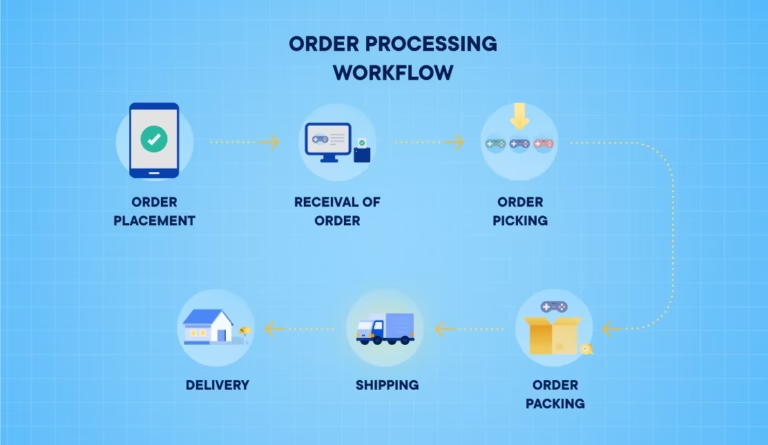The Role of Agile Methodologies in Improving the Developer’s Daily Productivity
Digest on the principles of Agile development;
With rapid advances in technology, the current demand for effective and creative software development is quite overwhelming. Developers are always on the search for opportunities to boost their effectiveness so that they are able to provide quality products responsive to the ever changing market conditions. In addition to this, Agile methodologies have been gaining momentum as game changers in this regard, providing structures that encourage flexibility and relational ways of working.
In this section where we outline how to implement the Agile way of working through development practices to improve developer productivity, we will tell you what are the benefits of the agile way, its key principles, some tools to use, case studies of real implementation, and even some problems that occur in the process. Strap in because it’s time to consider how an agile way of working changes your development processes.
Benefits of Agile for Developer Productivity ;
- Agile methodology changes the work life of project developers. One of the most obvious changes is the increase in flexibility.
- Teams cannot manage the whole project if certain requirements change; they simply change the parameters they are working on.
- Agile only succeeds with collaboration efforts. Stakeholders and developers keep in constant contact and think together with the team. The advantage of this alignment is that fewer people step on the banana peel of misunderstanding.
- Even at the first stage, the developers receive almost all the comments to the organiser and other senior staff. This greatly speeds up the process because all necessary corrections are made before the code is written. Such a practice not only improves the quality of the future code but also increases the overall spirit.
- Lastly, Agile encourages steady contribution to improvement in development processes, thanks to retrospectives and flexibility in elements. The members evaluate which materials are effective and which are not, hence continuously improving their skill sets and their practices.
Key Principles of Agile Methodologies;
Fundamental principles serve as wheels for effective cooperation as well as adaptation for Agile methodologies. The overarching goal is, therefore, customer satisfaction through the provision of valuable software deliverables early and frequently.Autonomy is appreciated in teams. Self motivated developers lead to increased levels of creativity. This type of investment breeds innovation and greater responsibility.
Reiterations that are frequent also ensure that the changes that may come up are quickly addressed. Long periods of planning are done just once, as Agile provides its customers with strong Feedback in short cycles. Being flexible turns out to be a merit.Lastly, improvement in processes is continuous in Agile environments. Retrospectives present a good venue for teams to reflect on both positive and negative aspects and in the process ensure that the teams advance every cycle of the project.
Tools and Techniques for Improving Developer Productivity in Agile;
Agile teams have at their disposal a wide array of tools that can elevate their developer productivity. Project management tools such as Jira and Trello help to easily visualise progress, requests for clean quarters, and the backlog activity.
Communication tools like Slack or Microsoft Teams encourage smoother interactions between team members. These tools also help in the reduction of miscommunication and help every team member understand the project objectives.Introducing CI/CD helps developers work efficiently as well. Developers do not have to spend as much time manually deploying the app as much of that process has been automated through testing and deployment.
Pair programming enables two or more team members to work together and share knowledge. This practice not only improves the quality of the code that is written; it also promotes collaboration among team members as they work through problems.Finally, the use of Agile tools, particularly the burndown charts, helps with basic project follow-up. With these metrics, they can also monitor their performance and choose new goals if they notice there is a bottleneck in their approach.
The Most Typical Problems and their Solutions in Agile Development;
Agile development allows for flexibility and collaboration and builds engagement but it’s not all roses. Teams often struggle with the idea that the process is not linear. Some developers are put off because the strategy changes every so often.
If the members of the team are not ‘pulled’ towards the same goals, there is also a possibility for communication to be thrown off balance. There could be a misunderstanding regarding the tasks which could result in wasted efforts and irritations.To remedy these problems, stand-ups and retrospectives can be held regularly so that everyone is properly informed. Visual tools, such as cameras, personal report cards and Kanban boards in this case help communicate roles and snapshots of progress better.
The last challenge, however, is the time management issue. The teams need to be adhered to performance sprints that have defined targets and timelines but allow the team members some discretion on how the tasks are to be performed. Changes during the course of the work enable high velocity and minimize stress within the teams.
Conclusion:
The software development industry is changing with snaps. The agile methodologies have become indispensable to many companies that seek to boost their developer’s productivity. Teams are more capable of adapting to new needs and requirements by being flexible and collaborative.
The Agile frameworks promote that environment where the developers and processes are always learning and improving themselves. This more flexible approach eliminates chokepoints and helps the team concentrate on delivering the required value as quickly as feasible. There is a strong focus on communication so that everyone is on the same page, and workflow is enhanced.To sum it up, adhering to the Agile is not simply a means of optimising the efficiency and output; it is a cultural change and a strategy that enables businesses to succeed now and in the days to come.
Stay in touch to get more news & updates on Vyvymanga.blog/






